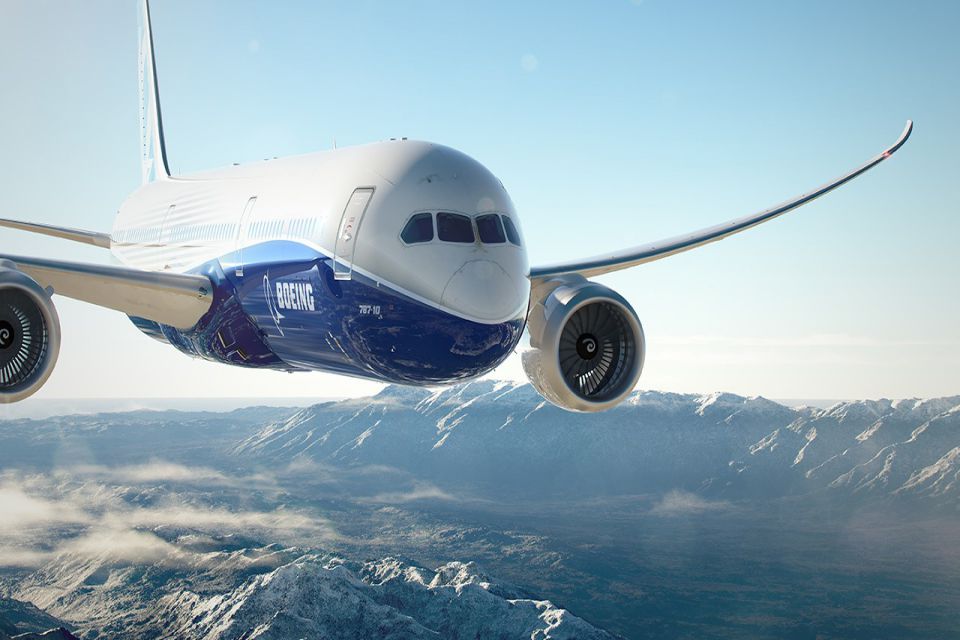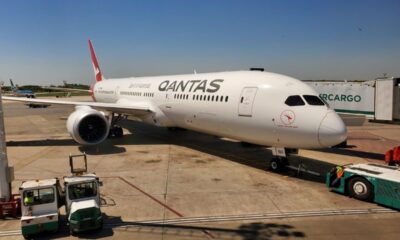Aerospace
Boeing 787 aircraft exempted from GAGAN augmentation system compliance till 2025: Ministry of Civil Aviation
According to the civil aviation ministry #Boeing #787 aircraft from GPS-aided GEO augmented navigation (#GAGAN) augmentation system has exempted compliance till 2025. read more

According to the civil aviation ministry Boeing 787 aircraft from GPS-aided GEO augmented navigation (GAGAN) augmentation system has exempted compliance till 2025.
GAGAN was created to help with navigation, both on the way and once you’ve landed. In order to ensure the safety of the passengers, it directs pilots to make precise runway landings. With more traffic and less demand for ground infrastructure, it aids the aviation sector in maintaining safety.
The Indian Space Research Organization (ISRO) and the Airports Authority of India (AAI) jointly developed GAGAN, India’s own satellite-based augmentation system offer the best navigational services over the Indian FIR (Flight Information Region), with the ability to expand to neighbouring FIRs.
As a plane approaches the runway for a landing, GAGAN offers lateral and vertical guidance. It offers GPS signal adjustments, increasing the precision of one’s position.
GAGAN additionally corrects for timing, satellite orbit, and GPS signal faults brought on by ionospheric disturbances. Even crucial data about each satellite’s condition is provided.
By delivering notifications to those affected, it also aids during natural catastrophes like floods and earthquakes. Aside from improving aircraft safety, it is claimed that using the GAGAN system reduces flight delays and conserves fuel. The technique also makes it easier for aircraft to land at airports without expensive instrument landing systems, such as many tiny regional airports.

Aerospace
India is set to build a central command for the Air Traffic Control system, called ISHAN

India’s air traffic growth has led to increased responsibilities for air traffic control. The Airports Authority of India (AAI) is considering centralizing air traffic control for aircraft, dividing the country into four regions. The goal is to consolidate India’s segmented airspace into a single entity to improve air traffic management (ATM) efficiency, safety, and smoothness.
Recently, the AAI invited expressions of interest to develop a detailed project report for the Indian Single Sky Harmonized Air Traffic Management (ISHAN) initiative in Nagpur. Under this plan, air traffic controllers in Nagpur would handle domestic flights flying above 25,000 feet, eliminating the need for coordination among controllers in different regions.
For domestic regional flights operating above 25,000 feet, control would shift to the central command in Nagpur. This consolidation aims to enhance airline operations, increase flight handling capacity, and reduce congestion and flight times for passengers.
Currently, the AAI provides ATM services over Indian airspace and adjoining oceanic areas, covering over 2.8 million square nautical miles. This airspace is divided into four flight information regions (FIRs) in Delhi, Mumbai, Kolkata, and Chennai, along with a sub-FIR in Guwahati.
FIRs are responsible for providing air traffic services, including weather information, visibility, and search and rescue assistance. The proposed unification under the ISHAN initiative aligns with the projected growth of the aviation industry, which anticipates a doubling of domestic passenger traffic by 2030.
Aerospace
Does AirAsia show interest in Comac aircraft in the future?

Tony Fernandes, CEO of Capital A, operating as AirAsia Group, recently paid a visit to the facilities of COMAC on April 2, 2024, and was thoroughly impressed by what he witnessed.
C919 already securing nearly 1000 orders
COMAC, known for its homegrown aircraft, has launched two promising jets: the ARJ21 and the C919 aircraft. Both aircraft are gaining popularity in the Chinese market, with the C919 already securing nearly 1000 orders from various airlines.
Fernandes expressed his admiration for COMAC’s achievements in aircraft manufacturing, acknowledging the immense challenge it entails. His visit underscored the realization that AirAsia now has a viable third option when it comes to selecting aircraft for its fleet.
During his tour, Fernandes was delighted by the innovation and technology evident in COMAC’s aircraft production and the company’s commitment to long-term partnerships.
He noted that many Western companies have shifted away from prioritizing loyalty and customer service, opting instead for short-term gains and a narrow definition of success.
Last month, COMAC embarked on an international tour, showcasing demonstration flights to neighboring countries, particularly Indonesia and Malaysia. Fernandes believes that the positive impression left by COMAC during his visit opens up new opportunities for collaboration.
Fernandes emphasized COMAC’s remarkable achievements
The shared values of loyalty, customer service, and long-term vision align closely with AirAsia’s ethos, making collaboration with COMAC appealing. With a focus on innovation and excellence, both companies stand to benefit from a partnership grounded in trust and a shared commitment to success.
Indonesia and China have already collaborated in validating and maintaining the airworthiness of the ARJ21 aircraft, indicating a solid foundation for future partnerships.
In his statement, Fernandes emphasized COMAC’s remarkable achievements and genuine desire for long-term partnership, highlighting the absence of ego and a genuine willingness to succeed together. He marveled at COMAC’s fully automated, AI-driven factory, a testament to their dedication to innovation and efficiency.
Fernandes criticized Western firms for prioritizing short-term gains over loyalty, customer service, and long-term strategy, emphasizing the importance of understanding customers’ needs and collaborating to achieve success.
Aerospace
Indigo will soon launch Air Taxi Service in India

InterGlobe Enterprises, the parent brand of IndiGo, is set to revolutionize travel in India with its upcoming air taxi service.
Scheduled for a potential launch in 2026, this innovative venture promises a seamless journey for passengers between two bustling hubs. Delhi and Gurgaon in Haryana. The forthcoming service is projected to revolutionize the daily commute, offering passengers a swift aerial journey covering the distance in a mere 7 minutes.
This remarkable efficiency contrasts starkly with the conventional 90-minute drive, underscoring the immense time-saving potential for commuters. The anticipated fare, ranging from Rs 2,000-3,000, makes this innovative mode of transport not only swift but also remarkably competitive in pricing.
At the heart of this ambitious endeavor lies a strategic partnership with Archer Aviation, a pioneer in electric vertical takeoff and landing (eVTOL) aircraft technology. Under this collaboration, Archer will supply 200 state-of-the-art eVTOL aircraft, representing an investment of US$ 1 billion. These cutting-edge aircraft, capable of accommodating up to four passengers alongside the pilot, epitomize the future of sustainable air travel.
Powered by six battery packs, Archer’s eVTOL aircraft boast rapid charging capabilities, enabling a swift turnaround between flights. With a charging time of just 30-40 minutes, these eco-friendly aircraft ensure minimal downtime, maximizing operational efficiency.
Similar services are anticipated to be introduced by the joint venture in Bengaluru and Mumbai as well. Nevertheless, the service rollout period has not yet been made public by the company. Next year, it is anticipated to get its certification. Following this, the company will start the certification procedure with the Directorate General of Civil Aviation (DGCA).




























